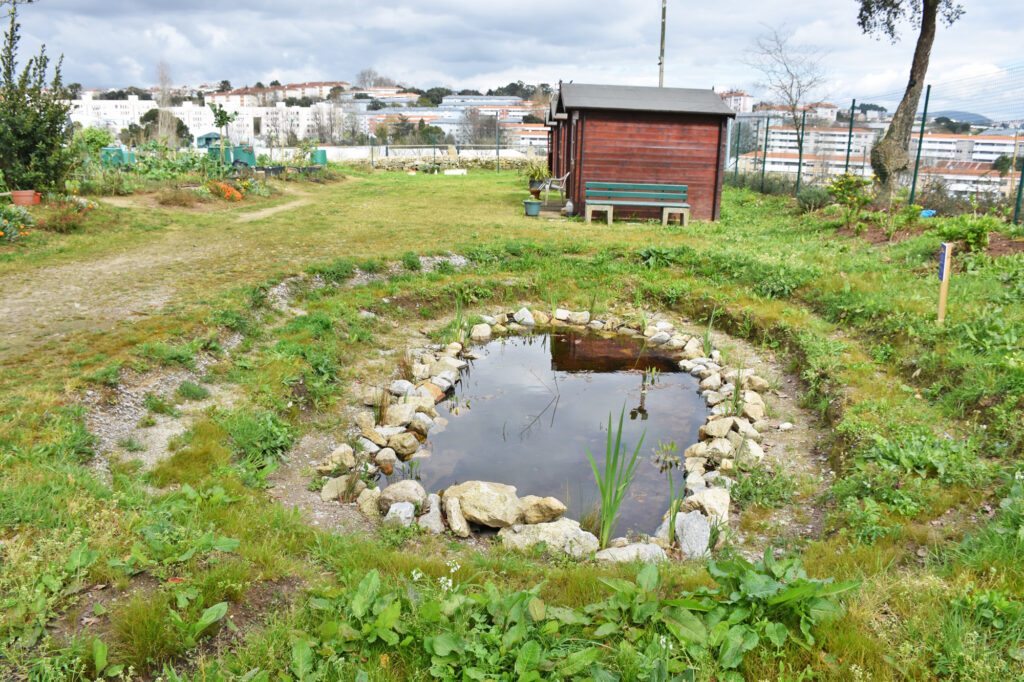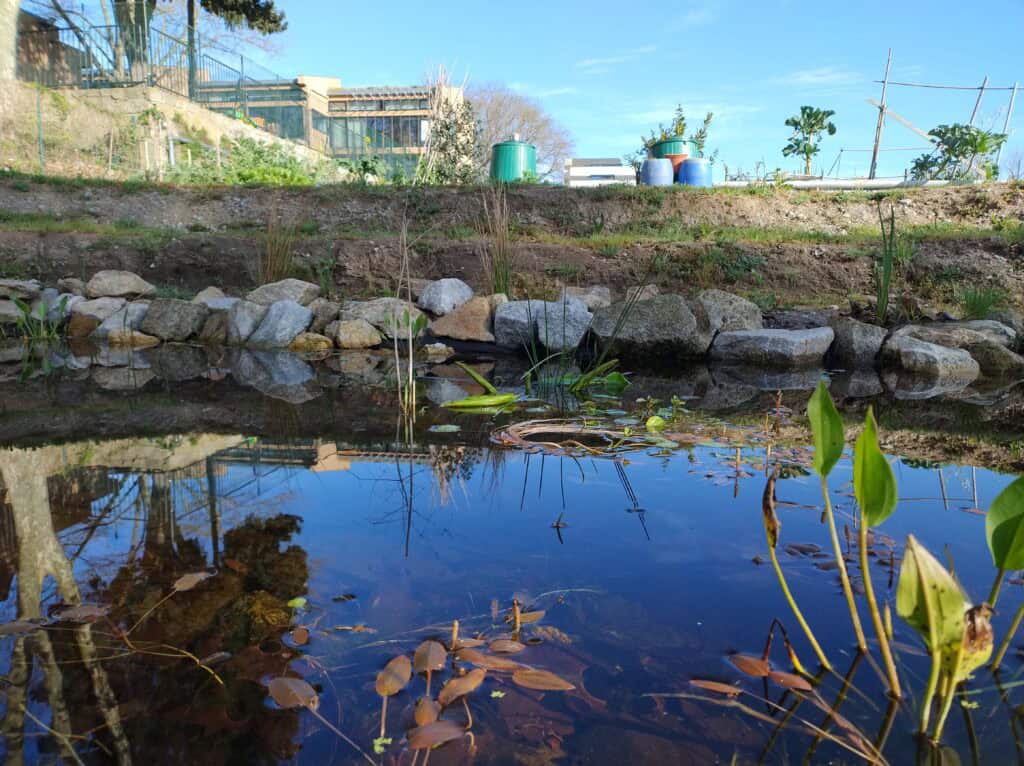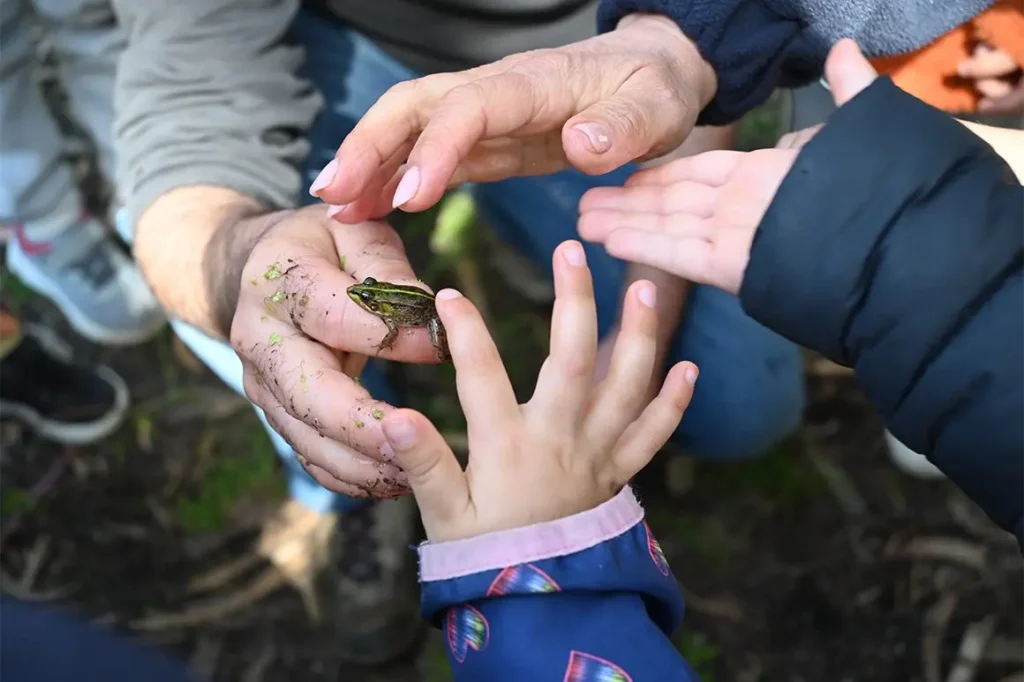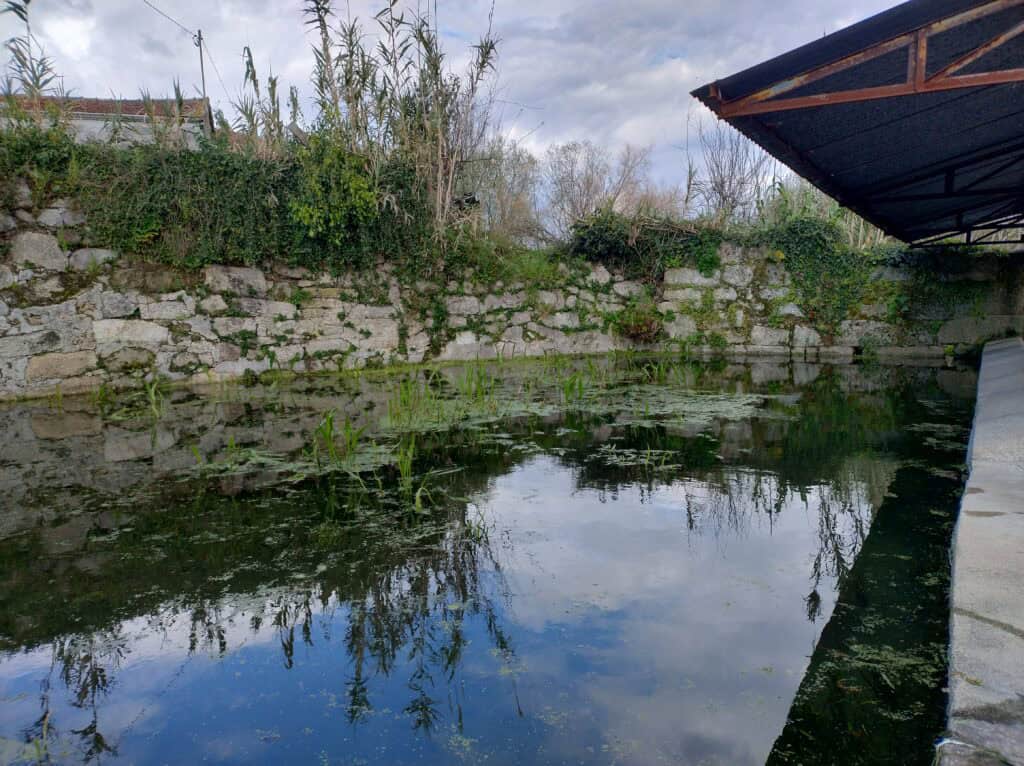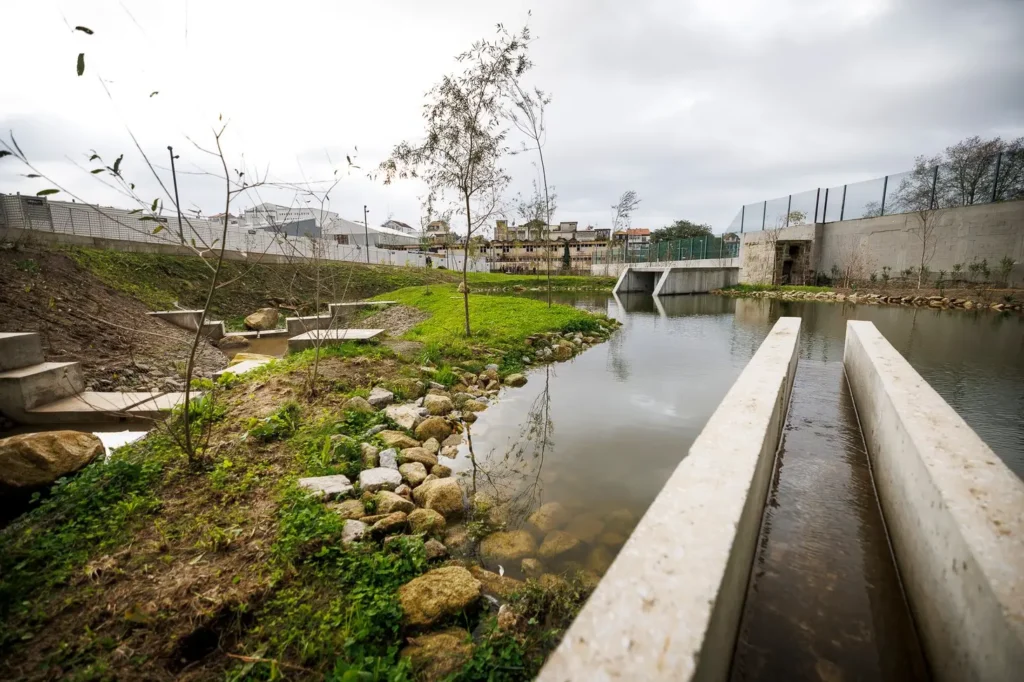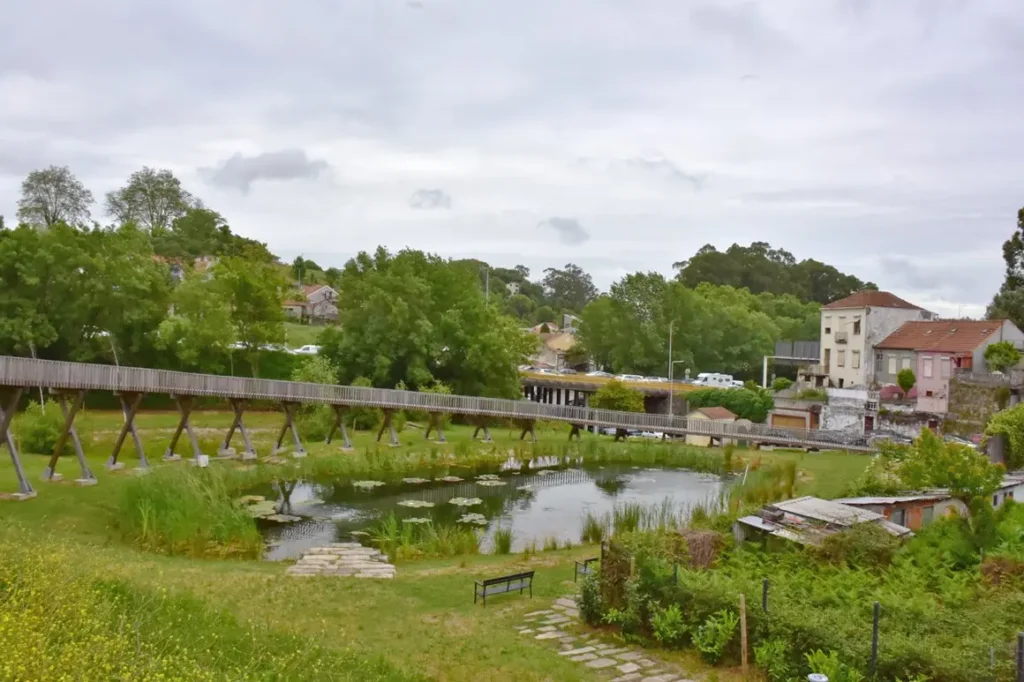The Horta da Oliveira pond collects water from the green roofs of the Falcão Primary School, thus contributing to a continuous water cycle. The deepest part of the pond is sealed, which ensures that the water remains in the pond during the drier months, and the upper levels are permeable to infiltrate surplus water into the aquifers.
It is a biodiversity hotspot that provides various ecosystem services to the vegetable garden and its gardeners. Four species of amphibian were introduced: Pelophylax perezi, Alytes obstreticans, Lissotriton boscai and Salamadra salamandra. In terms of botany, emergent aquatic plants (e.g. Iris pseudacorus and Lysimachia vulgaris) and floating plants (e.g. Nymphoides peltata and Potamogeton crispus) were introduced.
The pond was built as part of the myBUILDINGisGREEN (mBiG) project. This project involves adapting school buildings and social services to climate change in three very different climatic regions (Porto and Alentejo in Portugal and Badajoz in Spain).
This pond belongs to a network of water bodies interventions carried out by the Municipality, in partnership with CIIMAR (Interdisciplinary Centre of Marine and Environmental Research). The main objectives of this operations are to increase knowledge of the city’s wetlands, mapping, biological inventory and characterisation, with a view to adopting conservation and restoration measures and creating new water bodies
